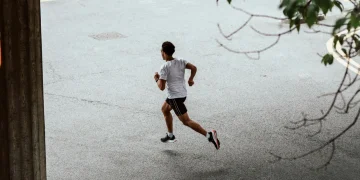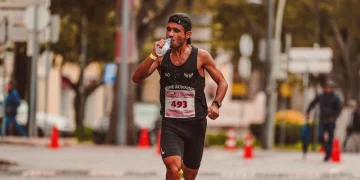For many athletes, runners’ chafing is a big problem that can turn a long run into hell. Unpleasant burning and discomfort from inner thigh chafing prevent you from continuing to train in the future. This problem also affects ordinary people who lead an active lifestyle.
Another very common problem for long-distance runners is chaffing of the nipples, a topic that wide circles of amateur runners prefer not to discuss because the topic is quite intimate. However, we think that awareness is the best way to successfully avoid it.
What is the Cause of Chafing?
Though not common in ordinary life, nipple chafing during running is a different story. The skin of the nipples is very delicate, and it is quite easy to chafe it.
When irritated, the chafed skin turns red, and microcracks form on it. This is due to the fact that the clothes are soaked with sweat. Sweat consists of salt crystals, which bring discomfort and chafes the skin like sandpaper.
There are lots of modern sportswear options that wick away sweat. But during a long run, even the most technologically advanced T-shirt can still become wet. Moreover, clothes cause chafing not only because of sweat. The shirt can get wet from the rain and also bring discomfort.
Chafing and Marathon Running
Have you ever seen a marathon runner at the finish line with a T-shirt soaked in blood around his chest? Yes, these are the consequences of chaffed nipples. Microcracks begin to bleed, and salt from sweat causes terrible pain.
Skin contact with clothing must be quite long to chafe the nipples to the point of bleeding. If you usually don’t run longer than 10k, you probably have not experienced this pain yet. It’s usually experienced by those who run half marathons, marathons, and ultras.
7 Treatments and Preventions for Chafing
Many marathon runners, taught by bitter experience, already know how to avoid chafing. There are several effective ways to deal with calluses and chafing.
1. Tape the Nipples
Women are protected from chafed nipples by seamless sports bras. They not only support the breasts but also protect them from chaffing. For men, an alternative option is to seal the nipples with a band-aid. It will protect from friction and bacteria and avoid direct contact with sweaty clothes.
2. Use Vaseline
Apply ointment to all areas that you can chafe. Besides the nipples, it is also useful against leg or inner thigh chafing and chafing of the armpits, toes, and perineum. If you’re running an ultra trail, take Vaseline with you and use it on the trail as needed.
3. Body Glide
This running lubricant, produced by the California company Body Glide, is liked by most. It is simple and convenient to use and contains natural ingredients, including vitamin F Forte, which helps soften and moisturize the skin. The product really works, which is confirmed by the huge number of reviews from athletes from all over the world.
4. Train in Seamless Synthetic Clothing
You are more likely to chafe your nipples with a cotton T-shirt than with a polyester one. Natural fabrics, unlike synthetics, do not repel moisture but absorb it. So, a cotton T-shirt will bring discomfort until you take it off and dry it. Polyester, which most sportswear is made from, stays dry longer.
Also, pay attention to the seams. They should be flat to minimize the risk of chafing. Wear tight, soft, stretchy clothing for running.
5. Dress Properly
Sweating while running is inevitable. But excessive sweat can be avoided if you do not wear heavy clothing that is too warm and will quickly accumulate moisture and rub the skin.
6. Drink Enough Water
Dehydrated skin is more vulnerable. Sweat does not moisturize but only irritates. Therefore, do not forget to drink water during long runs.
7. Maintain Hygiene
The way you wash your clothes is also important. It’s best to wash sportswear after each workout. If dried sweat and bacteria remain on it, it could contribute to skin irritation.
Use products for delicate fabrics. Conventional powders contain additives that stiffen the fabric and damage the membrane of the material, disrupting the moisture removal properties.






